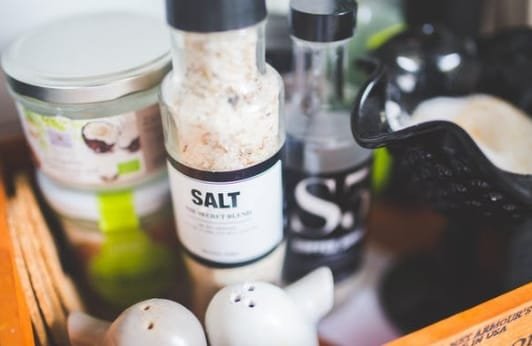Salt How Much Is Too Much?
Besides carbohydrates, salt has been one of the nutrients in food that has taken a big punch to the face, being often demonized. And though excessive consumption of salt can lead to unwanted side effects, facts remain facts – Salt is a VERY important micronutrient for the body. As a matter of fact, salt provides sodium, which is tightly regulated in the body, meaning that if you have too little, you won’t excrete as much and vice versa – if you have too much, you will excrete more.
In this short article, we’ll tell you more about salt, its functions, roles and recommended daily intake.
What Is Salt?
Salt is essentially made up of sodium & chloride, which are both essential microelements for the body that serve a variety of functions. Salt can be found in certain foods but is widely available in the form of crystals, which is in fact, the main reason why some people over consume it.
What Are The Functions Of Salt?
The main contents of salt (sodium & chloride) both play roles in many of the vital functions of the human body.
Those functions include but are not limited to:
- Carrying nerve impulses
- Muscle contraction
- Fluid balance
One fun fact is that chloride molecules help the body maintain the alkaline-acidic balance, thus helping sodium serve all of its functions properly.
What Is The Daily Recommended Intake?
Now, the good part is that the body has learned how to be efficient with its micronutrients, throughout the millions of years of evolution. Therefore, the body’s sodium needs are not sky high as one may think – those vary from 2 to 4 grams of salt per day. For kids under the age of 10, as well as adults above the age of 65, the daily needs may drop even further.
According to the world health organization, the upper limit for salt intake is around 5 grams, which is equal to about one teaspoon.
Side Effects Of Excessive Salt Consumption
With excessive sodium consumption, it is possible that the kidneys will not be able to excrete the excess amount and thus, levels of sodium in the blood rise. Sodium then binds with water and the total blood volume is increased, leading to an increase in blood pressure. If sustained, high blood pressure can have a lot of consequences for your health, including but not limited to:
- Insult
- Aneurysm
- Worsened kidney function
- Kidney stones
- Cardiovascular problems
Which Foods Contain Salt?
As we mentioned, there are many foods that contain a lot of salt, but those are mostly processed/canned foods.
Such are:
- Canned fish/meats
- Pickles
- Chips
- Instant foods
- Soy sauce
Most natural foods however, such as grass-fed beef, have a naturally low sodium content, putting them in the category of the safest foods to consume. These are the products you should focus on in your nutrition plan, while avoiding any highly processed foods as the ones mentioned above, for the most part.
Take Home Message
To wrap this up, let us tell you this – Salt is not the enemy. Carbs are not the enemy. Fats are not the enemy. The REAL enemy is the lack of balance and the lack of knowledge about what the body actually needs. Salt in and of itself is an ESSENTIAL nutrient, without which you will not function optimally, both physically and mentally.
For this reason, your best bet is to test for yourself and see which amount of salt daily is most suitable for your own activity levels. Some people may feel just fine at 2 grams, while others may need to go up to even 5-6 grams (i.e people who move and sweat a lot). For this reason, you should take all this information with a grain of salt and test for yourself!
Stay safe.













